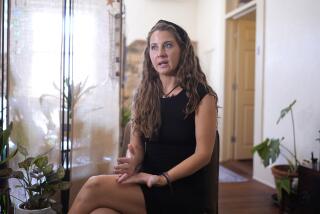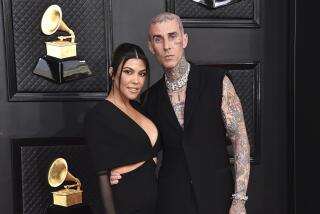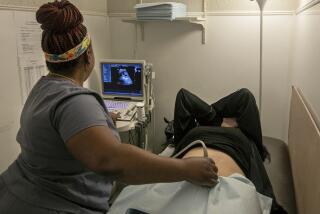With a third opinion, this pregnancy is saved
- Share via
My BIGGEST concerns, on the day of my amniocentesis, were the huge needle that would be stabbed into my protruding belly and whether we wanted to find out the sex of the baby. What I was not prepared for was the vacant yet grim look on the sonogram doctor’s face and the words he spoke: “There’s a problem with the baby’s kidneys.”
I can’t remember what he uttered after that. It all sounded like mumbo jumbo: Multicystic kidneys, dilations, cysts, renal pelvis and parenchyma. The diagnosis was not good. The baby would likely die in utero or, if he did make it to term, soon after delivery. Termination was recommended. I was 24 weeks along.
We visited another doctor who gave us the same verdict. She threw out more medical jargon: ureterocele, duplicated system and vesicoureteral reflux. I had no idea what any of those words meant. All I cared about was trying to save my son. She suggested we consult a specialist.
Having seen two doctors who gave the same devastating recommendation of termination, and after reading horror story after horror story on the Internet, my husband and I were skeptical about seeing yet another physician. But we did meet with Dr. Andrew Freedman, director of pediatric urology at the Endourology Institute at Cedars-Sinai Medical Center.
He examined the sonogram pictures of our son’s kidneys and calmly said, “This is hydronephrosis, not multicystic kidneys -- and I believe I can fix it.” Because of a blockage, fluid was backing up into the kidneys, progressively damaging them. The worst-case scenario, Freedman said, was that the baby would need a transplant.
I was closely monitored during the remainder of my pregnancy. Amniotic fluid is composed mostly of urine made by the baby; if not enough urine is produced due to defective kidney function, there may not be enough of it, leading to other complications: deformities of the face, foot or belly. More Web-surfing revealed disturbing images.
We made it to the safe mark of 36 weeks when my water broke and a healthy 8-pound boy was born.
When our baby, Sonny, was just 4 days old, Freedman successfully repaired the blockage, alleviating pressure on his right kidney. We were sent home with several medications to administer around the clock.
A short time later, it was discovered that the left kidney, already badly damaged, was no longer functioning. It was removed laparoscopically when he was 4 months old. He was released after 24 hours -- no medicine, no antibiotics. Just four tiny scars covered by cute, little animal-shaped bandages.
That first year consisted of regular visits to the pediatric nephrologist to check his creatinine levels and follow-up visits with Freedman. For his first birthday, he was given a clean bill of health and the instructions, “no contact sports.”
He is now a healthy, highly spirited 5-year-old who has no memory of those early days, all because we got a third opinion.
My advice to any parent when given a similar diagnosis is to get as many opinions as you can -- and stay away from the Internet.
--
Liesl Bradner is the mother of two children, ages 6 and 5, and works in the L. A. Times Calendar section.






